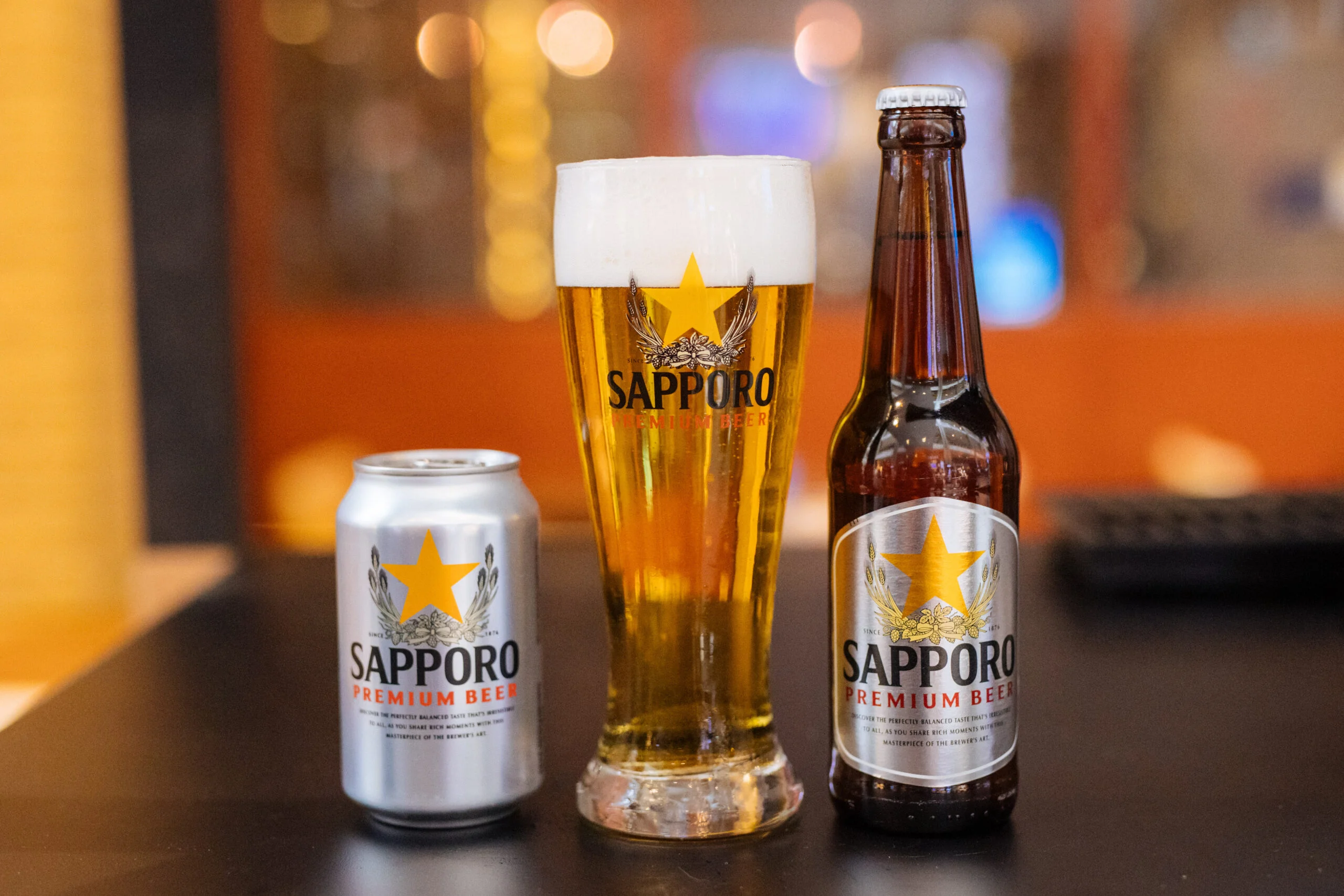The History of Sapporo Beer
The story of Sapporo Beer begins in 1876, in the pioneering city of Sapporo, Japan. Originally founded by Seibei Nakagawa, Japan’s first German-trained brewmaster, the Sapporo Brewery was set up as part of a national development plan by the Japanese government to enhance its industries.
This origin rooted in innovation and quality set the stage for Sapporo as a global brand. Over the years, the brewery honed its craft, focusing on a rich and refined taste that resonates with a wide audience.
The Sapporo Beer brand gained prominence in Japan through its use of the finest ingredients and groundbreaking brewing techniques.
By the 20th century, it was not only a market leader in Japan but also started to mark its presence on the international stage. The iconic silver star logo, inspired by the North Star, has since become a symbol of high quality and excellent craftsmanship.
The turn of the millennium saw Sapporo Beer acquiring numerous breweries around the globe, and expanding its footprint significantly.
This strategic expansion was not just about spreading the brand but also about integrating diverse brewing styles and cultures, which helped in creating a versatile and rich product portfolio appealing to international tastes.
Global Reach and Expansion
Sapporo’s global journey has been marked by strategic acquisitions and an understanding of regional beer markets. Notably, in 2006, Sapporo purchased the Canadian brewery Sleeman, marking a significant entry into the North American market.
This was a part of its broader strategy to establish a stronghold in regions with a strong beer culture and an appreciation for premium international brands.
Following this acquisition, Sapporo Beer became accessible to a wider North American audience, who were eager to experience the rich heritage and authentic Japanese brewing techniques that Sapporo brought to the table.
The brand’s international strategy focuses on localized marketing while maintaining the core values and quality that Sapporo is known for.
In Europe and other parts of Asia, Sapporo has strengthened its market presence through both organic growth and partnerships. Collaborations with local distributors and promotional campaigns have been key to this expansion strategy.
The brand understands that each market has its unique tastes and preferences, and adapts its approach accordingly.
Product Variety and Innovations
Over the years, Sapporo Beer has expanded its product line to cater to a broad range of preferences and occasions.
From the classic Sapporo Premium Beer, the flagship of the brand, to more innovative offerings like the Sapporo Black and Sapporo Light, the company has consistently innovated to meet consumer demands.
The introduction of Sapporo Premium Light was a response to the growing demand for lighter, lower-calorie beers without compromising on flavor.
This product has been especially popular in markets where health consciousness is on the rise, and it reflects Sapporo’s commitment to innovation.
Additionally, Sapporo has ventured into craft beer territories with its range of Yebisu beers, catering to the aficionado looking for sophistication and depth in flavor.
Each variant is brewed with meticulous care and represents a facet of Sapporo’s brewing mastery.
Marketing and Cultural Impact
Sapporo Beer has made significant inroads into global markets through clever marketing strategies that resonate with diverse consumer bases.
One of the most successful campaigns is the association of Sapporo with the concept of Japanese quality and tradition. This has not only helped in building a strong brand identity but has also appealed to the global consumer’s growing interest in ethnic and authentic products.
The brand’s presence in international film, music festivals, and major sporting events has further elevated its status as a premium global icon.
Sapporo’s sponsorship deals, particularly with events that celebrate Asian culture, have helped in creating a niche market where consumers can associate Sapporo with high-quality entertainment and lifestyle.
The impact of Sapporo on global beer culture is significant, as it represents a blend of Japanese tradition with modernity, appealing to a global audience while staying true to its roots.
This balance has been key to Sapporo’s enduring success and influence in the global beer market.
Future Prospects and Sustainability Initiatives
Looking forward, Sapporo Beer is committed to sustainability and eco-friendly practices, recognizing the importance of environmental stewardship in today’s global market.
The company has implemented several initiatives aimed at reducing its carbon footprint, such as optimizing brewing processes and investing in renewable energy sources.
The future also looks bright with plans for further international expansion, particularly in emerging markets.
Sapporo continues to explore opportunities in South America and Africa, where the beer market is rapidly growing. With a focus on sustainable growth and innovation, Sapporo aims to not just expand its geographic footprint but also its influence and legacy as a global beer icon.
The journey of Sapporo Beer from a Japanese brewery to a global powerhouse is a testament to its vision, quality, and adaptability.
As it continues to grow and evolve, Sapporo will undoubtedly keep influencing the world beer market, introducing new tastes and brewing techniques, and promoting sustainable practices.
